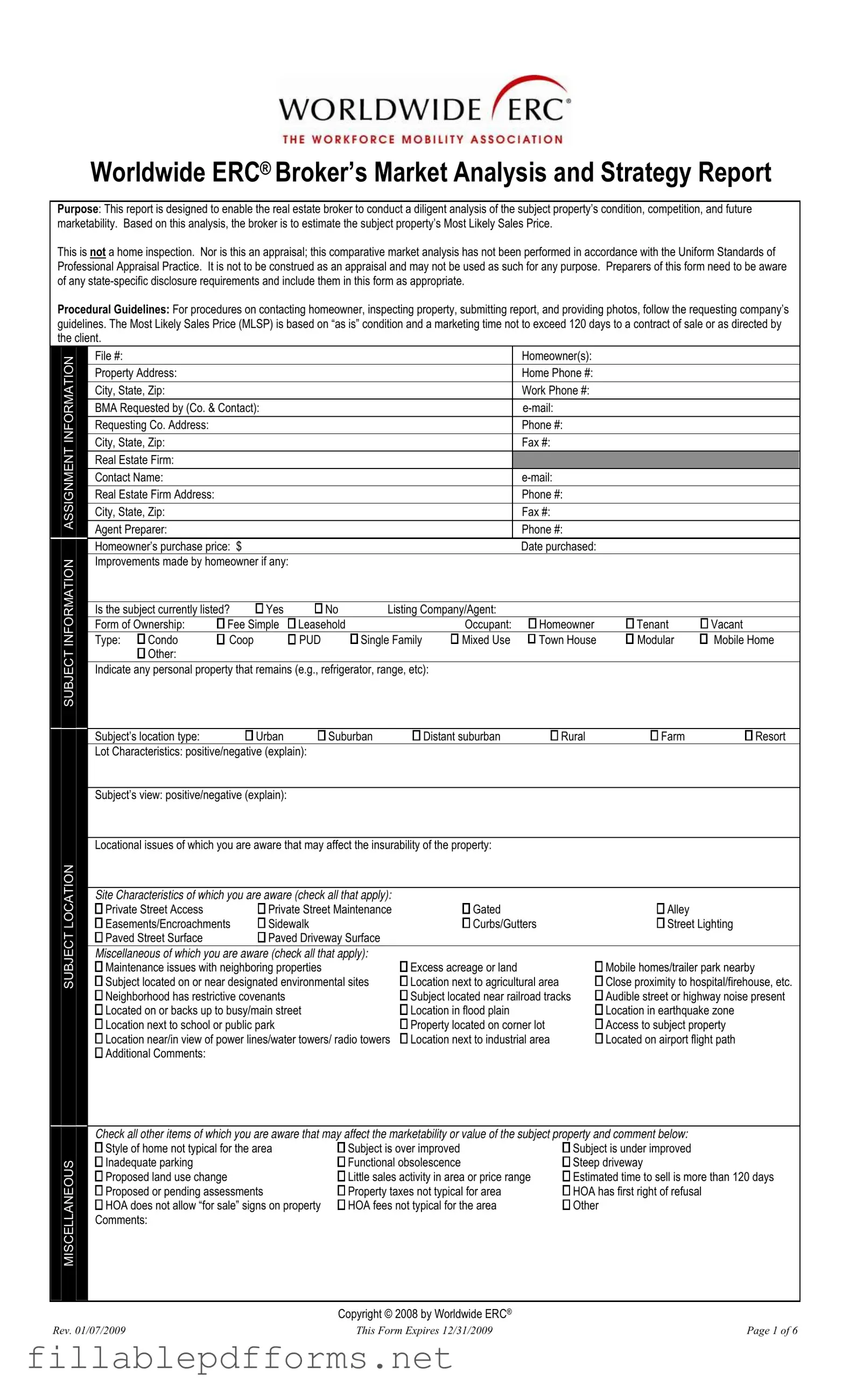Erc Broker Market Analysis PDF Template
The Worldwide ERC® Broker’s Market Analysis and Strategy Report serves as a vital tool for real estate brokers, enabling them to thoroughly assess a property's condition, its competition, and its potential marketability. By utilizing this form, brokers can estimate the Most Likely Sales Price of the property, providing valuable insights for sellers and buyers alike. It is important to note that this analysis is distinct from a home inspection or appraisal, and must adhere to state-specific disclosure requirements.
Launch Editor Here
